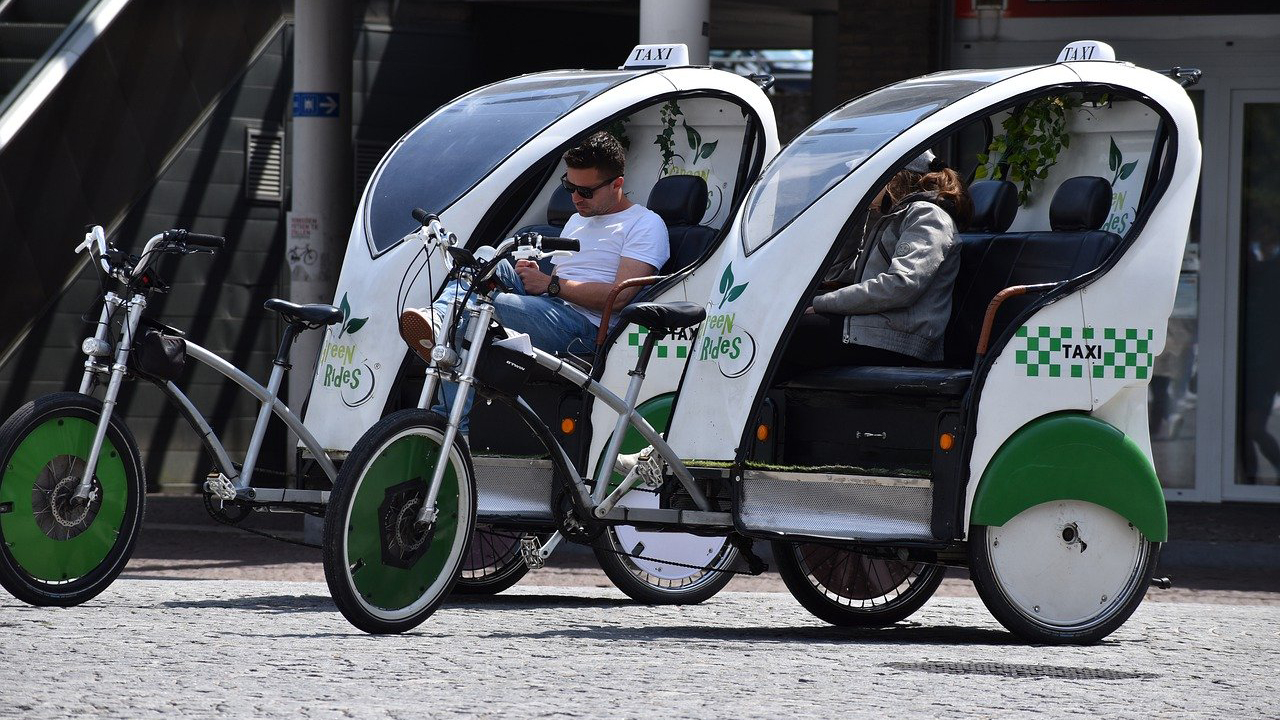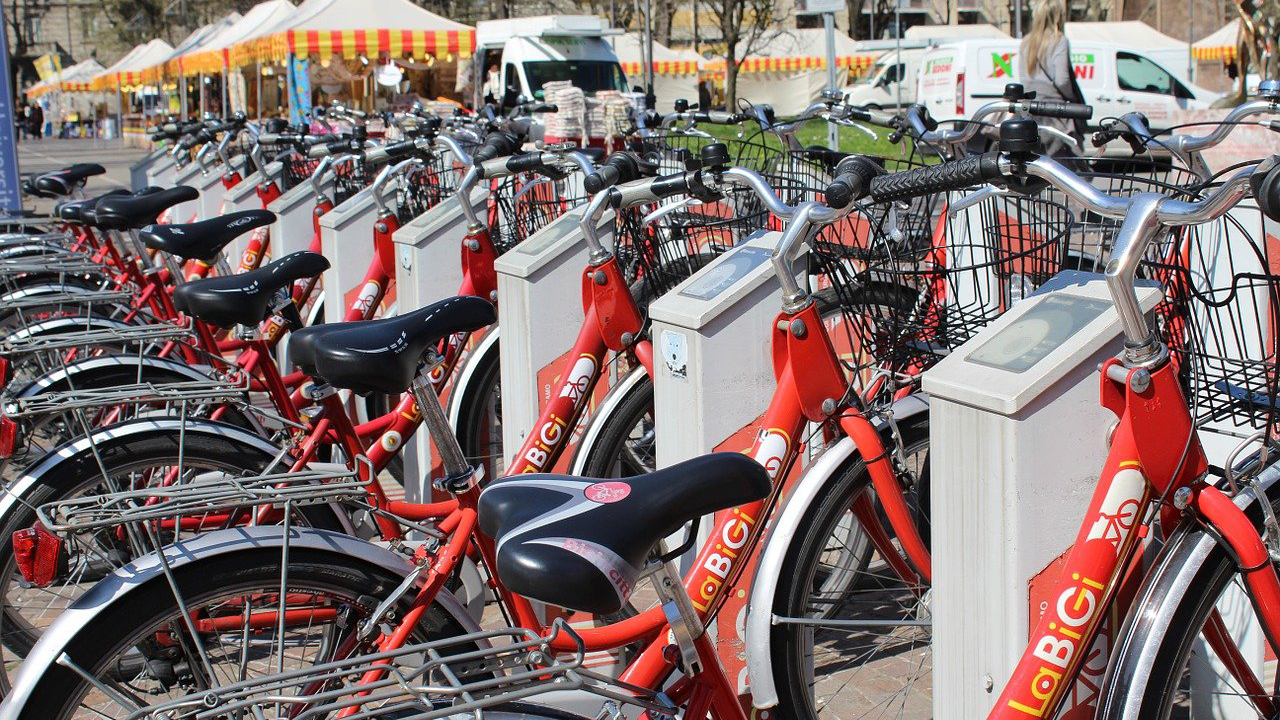We all need to get around somehow. And today, the ways in which we get from here to there for both work and leisure are expanding massively due to several factors, including technology advancements and a desire to go green. In urban centers, concerns like congestion, the high costs of owning a vehicle and environmental impact are leading more people to turn to micromobility methods. So - what is micromobility? Why is it an emerging trend and how does it support
sustainable cities?
In this blog post, we explore the micro mobility market and discuss the future of e scooters, bike sharing and other use cases, as well as the product development needed to support this trend. We will talk about the benefits of micromobility solutions and why smart cities are adopting a cohesive micromobility strategy. This information will help you better understand the micro mobility trends that are shaping this growing Internet of Things (IoT) sector.
Note that people also ask "what is micro mobility?" So you will find we use the two spellings interchangeably throughout this post.
What Is Micromobility?
 So what is micromobility anyway? While there is no standardized definition of micromobility, it is generally used to describe small vehicles that can seamlessly navigate highly populated urban areas. Micromobility vehicles are designed for short trips of only a few miles and travel at low speeds, typically under 15 MPH. These vehicles do not rely on internal combustion engines, but they many are powered by electric motors.
So what is micromobility anyway? While there is no standardized definition of micromobility, it is generally used to describe small vehicles that can seamlessly navigate highly populated urban areas. Micromobility vehicles are designed for short trips of only a few miles and travel at low speeds, typically under 15 MPH. These vehicles do not rely on internal combustion engines, but they many are powered by electric motors.
Micromobility devices may be privately owned, but are often shared-use vehicles that are maintained by a municipal government or private entity. Micromobility devices are particularly appealing to residents of densely populated areas, as they provide quick and convenient transportation to nearby destinations such as grocery stores, shops, or entertainment venues. Vehicles such as eScooters, Vespas, Segways, standard bikes, eBikes and human-powered or electric rickshaws are also available in many major cities for touring and guided tours.

Micro mobility solutions have experienced a surge in popularity as owning a vehicle in many urban areas can be impractical and relying on schedule-based public transportation is not always convenient. Between the cost of vehicle ownership, rising insurance costs, and a lack of convenient parking, many residents opt not to purchase a traditional car. The following cities have already experienced significant micro mobility market growth or have performed important pilot projects:
- Barcelona, Spain
- Chicago, Illionois
- Los Angeles, California
- Minneapolis, Minnesota
- Montreal, Canada
- New York City, New York
- Oakland, California
- San Francisco, California
- Toronto, Canada
Municipal, Commercial and OEM Collaboration
In order to create a cohesive network of micromobility devices, an organization or municipality must establish the technology and infrastructure to support the project, and potentially work with a systems integrator or wireless design team to develop the wireless technology for mobile connectivity.
Some of the key needs and considerations for these projects, from a planning perspective, include the following — depending on whether the vehicles are electric, whether they must be docked or can be abandoned, and other considerations:
- Embedded intelligence to support the desired functionality
- Wireless connectivity, with GPS, to support location services, remote monitoring, and over-the-air firmware updates
- Integrated functionality for EV charging and battery management
- Infrastucture for docking and charging
- Point-of-sale services, connectivity and security
- Fleet management planning, including locating misplaced vehicles and servicing
Digi can be a valuable asset to an organization during the planning and implementation process, as we offer the Digi ConnectCore® embedded system-on-module (SOM) development platform, the Digi XBee ecosystem of wireless communication modules (including cellular and RF mesh protocols), as well as networking solutions, including routers and gateways, and product design and testing services.
Additionally, Digi offers a full suite of software and services:
- Digi devices integrate the TrustFence® security framework to thwart tampering.
- Integrated Digi Remote Manager® supports remote monitoring and management as well as alerts and notifications.
- For OEMs and organizations that need prototyping, design, connectivity and testing support, our Wireless Design Services team of skilled engineers can help.
The Future of Transportation is Here
5G Connectivity for Public Transit and Commercial Transportation
Download PDF
Micromobility Solutions
 Despite the fact that the micromobility market size has grown tremendously in just a few short years, with companies like Lyft and Bird leading the way, the industry itself is still in its infancy. As a result, new innovations are occurring frequently and creative solutions are always on the horizon.
Despite the fact that the micromobility market size has grown tremendously in just a few short years, with companies like Lyft and Bird leading the way, the industry itself is still in its infancy. As a result, new innovations are occurring frequently and creative solutions are always on the horizon.
However, several traditional solutions have gained quite a bit of traction with consumers. A few examples include rickshaws and pedicabs, cargo bikes, skateboards and rideshare bicycles.
In addition to these options, eBikes and eScooters are becoming a common phenomenon in major cities. Rideshare companies and municipalities are deploying these micromobility solutions throughout cities so that residents can easily access them when they need transportation. When equipped with edge computing technology and IoT devices, micromobility solutions such as these can be precisely tracked and managed. Asset management is integral to the success of any micromobility program.
All told, the micromobiltiy trend includes a growing variety of vehicles :
- Scooters and eScooters
- Standard bicyles and eBikes
- Segways
- Surreys
- Skateboards
- Rickshaws and pedicabs
- Even electric golf cart rentals!
Benefits of Micromobility Technology
 Micromobility solutions have become a hot topic as cities across the globe focus on leveraging technology for the purposes of increasing sustainability. Leading-edge technologies such as IoT devices will allow organizations to implement complex micromobility transportation networks. This will improve the lives of citizens while simultaneously benefiting the municipality in reducing traffic congestion and vehicle emissions.
Micromobility solutions have become a hot topic as cities across the globe focus on leveraging technology for the purposes of increasing sustainability. Leading-edge technologies such as IoT devices will allow organizations to implement complex micromobility transportation networks. This will improve the lives of citizens while simultaneously benefiting the municipality in reducing traffic congestion and vehicle emissions.
There are a number of additional benefits of micromobilty technology.
- Affordable: Renting a micromobility device is far more cost-effective than purchasing a full-sized vehicle, maintaining insurance, paying for routine maintenance and buying fuel. This will free up community members’ revenue, which they can then spend on necessities while also supporting local businesses.
- Sustainable: Micromobility solutions create zero emissions, which will allow densely populated areas to reduce their carbon footprint. The micromobility transportation model is extremely sustainable, especially as eScooter and edge computing technologies continue to evolve.
- Efficient: A micromobility network is highly efficient when compared to other public transportation solutions. Once a network has been implemented, a city can reduce the burden on other types of public transit, such as buses and subway systems.
- Convenient: The convenience factor is one of the most appealing aspects of micromobility. Community members can quickly find a micromobility device on many city street corners, get to their destination, and rent another device when they are ready to return home. Many urban dwellers also find that with an annual pass, it pays to get anywhere in the city via rental bikes, as they can find one anytime, and do not need to perform their own maintenance.
Micromobility Trends
 Of all the movements shaping the micromobility space, the electric scooter trend is by far one of the most notable. The electric scooter industry has expanded significantly in just a few years and the future outlook is impressive.
Of all the movements shaping the micromobility space, the electric scooter trend is by far one of the most notable. The electric scooter industry has expanded significantly in just a few years and the future outlook is impressive.
- Some projections regarding E scooter market growth estimate that the compound annual growth rate (CAGR) for the industry will be at 7.6% between 2021 and 2028.
- 2021 was the year of the e-bike, says TechCrunch, with a growth rate in sales of 240% over the 12 months leading up to July.
- According to Vantage Market Research (VMR), the future of bike and scooter rental market economy is expected to grow $11,040 million by 2028.
- The cargo bike trend is in a position to grow according to recent predictions, with great benefits for the environment. A study called The Promise of Low Carbon Freight found that during a three month period, cargo bikes helped save a total of 3,896 kilograms of CO2 and 5.5 kilograms of nitrogen oxide.
- Mobility-as-a-Service (MaaS) will be a growing trend as smart cities seek to improve air quality, reduce traffic congestion, and improve social equity - enabling every citizen to gain access to affordable transportation.
While the e scooter trend is dominating the micromobility sector, a few other devices are being utilized with increasing frequency as well, including eBikes for commuters and travelers, while Segways, rickshaws and pedicabs will see increasing usage as global tourism experiences a lift in a post-pandemic world.
Challenges Ahead: Developers and the Micromobility Market
 As a matter of necessity, micromobility solutions must be outfitted with specialized technologies. This includes IoT devices for wireless communication, GPS hardware, and much more. Naturally, launching a complex transportation network that incorporates so much emerging tech presents its fair share of challenges.
As a matter of necessity, micromobility solutions must be outfitted with specialized technologies. This includes IoT devices for wireless communication, GPS hardware, and much more. Naturally, launching a complex transportation network that incorporates so much emerging tech presents its fair share of challenges.
Perhaps the biggest hurdle facing developers and the micromobility market is logistics. Every device, as well as the charging stations or docks where they are stored, must be carefully tracked and maintained. Otherwise, the total cost of doing business would not be sustainable. Overcoming this challenge involves selecting underlying technology that supports remote monitoring, and integrates an IoT management platform.
Another major barrier that developers must overcome is misuse and theft. Some percentage of micromobility usage is bound to result in damaged or stolen equipment. Micromobility stakeholders must take steps to mitigate these issues if they hope to receive a return on their investment.
Micromobility developers that successfully navigate these challenges will find themselves in a prime position to harness this exciting emerging market. They will be able to make a positive impact on urban areas, helping cities to become more sustainable, while creating excellent revenue.
To recap, the most significant challenges and opportunities surrounding the micromobility sector are:
- Challenges:
- Logistics and asset management
- Theft and misuse
- Complex design requirements
- Opportunities:
- Break into an emerging market
- Be a part of smart cities tech innovation
- Support inclusive mobility and social equity
- Promote carbon reduction and support net zero goals
Micromobility Market Growth: No End in Sight
 Despite the challenges associated with launching micromobility services, the industry has experienced significant and rapid growth, driven by demand. Most experts project that the micromobility market will continue to experience this growth. While these projections take many factors into account, the positive market outlook is based on two key factors:
Despite the challenges associated with launching micromobility services, the industry has experienced significant and rapid growth, driven by demand. Most experts project that the micromobility market will continue to experience this growth. While these projections take many factors into account, the positive market outlook is based on two key factors:
- Residents of densely populated areas need convenient, affordable transportation options.
- The recovery of global tourism in the post-pandemic world will drive demand for city mobility and economical local touring options.
Certain technologies within the micromobility sector are expected to experience the most sustained growth. Specifically, IoT devices, asset management platforms, and green technologies such as solar charging for infrastructure, will all be in high demand as cities continue to adopt micromobility solutions.
Explore Digi’s Blog for More Technology Trends and Insights
 In the coming years, you can expect to see micromobility services springing up in major cities across the globe. Municipalities — and the residents they serve — want to address transportation pain points with sustainable transport devices. Micromobility devices, such as eScooters, provide them with the ideal solution.
In the coming years, you can expect to see micromobility services springing up in major cities across the globe. Municipalities — and the residents they serve — want to address transportation pain points with sustainable transport devices. Micromobility devices, such as eScooters, provide them with the ideal solution.
If you would like to learn more about technologies that are supporting this emerging transportation trend, check out our technology and thought leadership blog. Digi is a pioneer in the wireless communication space. We are committed to helping developers, municipalities and enterprises to carry out their vision by connecting them with the technologies and resources needed to get the job done. Want to connect with an expert? Contact us!